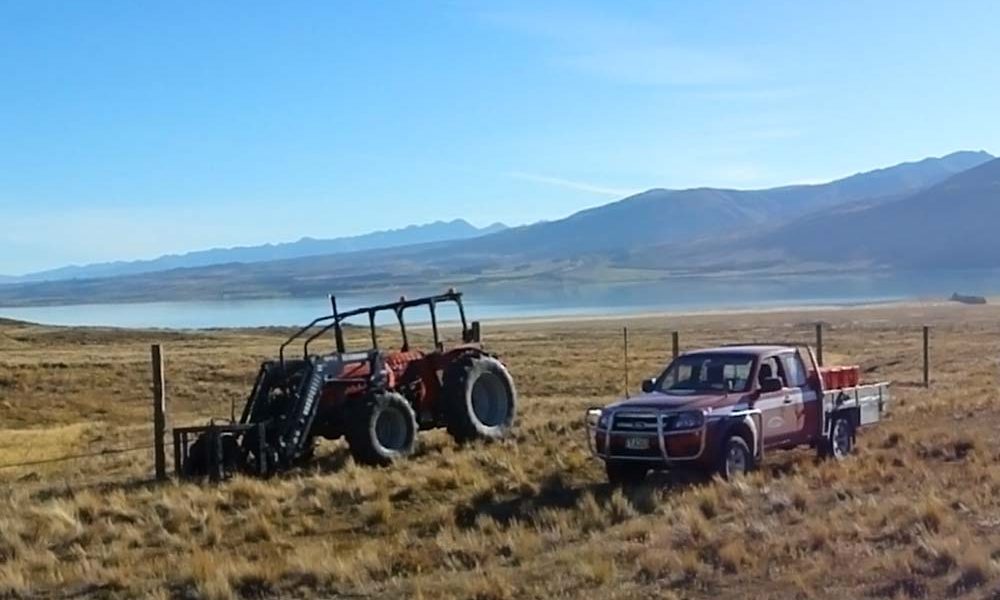
What is a hazardous substance?
What do you do to ensure safety when using the products in your work vehicle?
Do you understand the hazardous side of items you carry and the
harm that may occur when exposed to them over time? Are they correctly labelled?
What if there is a spill?
Do I have a Safety Data Sheet (SDS)?
Do I have an Emergency Plan?
These are just some of the questions you should ask yourself. We deal with hazardous substances every day in our job, from the diesel you put in your tractor to the staple gun gas you use. Most contractors carry approximately 6 hazardous substances to work. (You just went out to count, didn’t you?)

Health and Safety at Work (Hazardous Substances) Regulations 2017
General Requirements
- You must manage the risks caused by hazardous substances in the workplace
- You must keep an inventory of all hazardous substances used, handled, manufactured or stored in your workplace. This includes hazardous waste.
- You need a Safety Data Sheet (SDS) for every hazardous substance supplied to your workplace. The SDS (or a condensed version of its key information, such as a product safety card) needs to be accessible to everyone who could be exposed to the substance in your workplace.
- Every container of hazardous substances in your workplace needs to be labelled. This includes containers of hazardous substances you produce in your workplace and hazardous substances you remove from their original containers.
- Every hazardous substance in your workplace needs to be properly packaged. This includes hazardous substances in their original containers and hazardous substances that you repackage in your workplace.
- Some substances and locations have new signage requirements. You need to maintain your signs and keep them up to date.
- There are additional items on the emergency response plan to: cover any emergency that could happen in your workplace, list any training needed by people with responsibilities in an emergency and provide an inventory and a site plan.
- Fire extinguishers must be clearly visible and readily accessible and have a rating of at least 30B.
- Ensure every worker who handles hazardous substances receives the information, training, instruction and supervision that they need.
The Hazardous Substances and New Organisms (HSNO) Act is there to protect:
- The environment.
- The health and safety of communities and people.
- To control, manage and prevent adverse effect of the hazardous substance and new organism.
Under the Act a Hazardous Substance is any substance that may exceed levels defined in the regulation for:
- Flammability
- Corrosiveness
- Chronic or acute toxicity
- Eco toxicity
- Explosive
- Integration with air or water to cause a hazard/risks substance
Compliance
To comply with the Act persons shall.
- Store chemicals or hazard substance appropriately in correct containers and facilities.
- Have current Safety Data Sheets available (SDS) for any chemicals or hazardous substances on site.
- Have a register that is updated regularly for current and held Hazardous substances on site.
- List approximate quantities of Hazardous Substances on site.
- Have in place an emergency procedure for Hazardous substances accidents or incidents.
- Have an approved handler if so required to use and manage Hazardous substances used.
- Have approved PPE equipment – glasses, respirator, gloves, overalls and hazard/risk control (spill kit), and fire extinguisher.
- Approved method of discard or disposal.
Safety Data Sheet
The SDS for items carried in your vehicle should be no more than five years old and be held in the front door or pocket of the driver’s seat. It should contain valuable information about storage, transportation, and medical advice what harm the product can have.
You can use the online calculator from https://www.hazardoussubstances.govt.nz/calculator to get valuable information. The register should outline what you use and carry and be kept in an easily accessible place. You can update and it will tell you the controls required.
Have you ever actually read one to see the information it holds?
You may change the way you use the product or swap it out for a more friendly one if you did.
Have you got the right signage?
Signage is important to communicate what substance and how much of it you are carrying. The contents and quantities must be labelled on the container. The information is not only labelling the content but also in the event of an accident, it gives emergency services an idea of what they may be dealing with, and how to respond to a spill or fire
NEVER store any substance in a drink type bottle. Many children have died from ingesting hazardous substances thinking it was water. Substandard labelling and storage can also lead to an incorrect substance being used, causing an explosion.
List of HSNO Classification Codes
These are the Hazardous Substances and New Organisms Act classification codes.
- Physical Hazards (Classes 1-5)
- Health Hazards (Classes 6-8)
- Environmental Hazards (Classes 9)
HAZARDOUS SUBSTANCES REGISTER EXAMPLELocation: Utility box Signed: DR Date 1/2/23 Review Date 1/2/24 QTY = Quantity SDS = Safety Data Sheet PPE = Personal Protective Equipment |
|||||||||||||||||||||||||||||||||||
|
|||||||||||||||||||||||||||||||||||
Site Plans

You may need a site plan depending on the job you’re doing.
Your emergency response plan needs to include a site plan. Make sure the plan is accurate and drawn to scale so that
anyone who needs to use it can identify the distances involved and any other relevant information about the location.
The plan could show, depending on the nature of your operation, the following items:
- a north point
- all hazardous substance locations and tanks or processing equipment for hazardous substances
- all buildings, entry and exit points to buildings, and any stairs or lifts
- the location of the fire alarm panel on your building
- the main electrical switchboard
- the main structures, roads, and landmarks on your site
- access points for emergency vehicles and any barriers or height limitations for vehicles entering the site
- the location of the nearest water supply, such as tanks or hydrants
- if you have water tanks on site, the size of the tanks
- if the nearest hydrant is not visible on the plan, place an arrow on the plan (where the plan shows the road outside your site) to indicate its direction
- the emergency evacuation meeting points
- access and shut-off points for gas, water and electricity mains
- any major electrical transformers, generators, or other potentially hazardous plant
- shut-off valves for any piped gas or chemical processing systems
- any specialised fire safety systems, such as mist or drencher systems
- the location or direction of any high-risk neighbours such as:
- schools or public meeting places
- retirement homes or hospitals
- petrol stations or neighbours that store large volumes of chemicals.
Other useful information to include on your site plan:
- drains, marking the direction of flow, and any storm water grates on your site or on the road outside it
- the location of spill kits, first aid kits, fire extinguishers and any other emergency equipment
- the location of your SDS, inventory, and of the site plan.
- Attach a copy of your site plan to your job documents
Have you got your spill plan items and card ready to go and do your staff know what to do?
Hazardous Substances Training Worksheet
Training to handle substances is vital, ensure you learn about the substances you use and what safe handling looks like:
| Training Topic | Yes/No | Comments/ Assistance required |
|---|---|---|
| Is the employee aware of the harm that can be caused from each hazardous substance they use at work? | ||
| Does the worker Know which substance are incompatible and need to be stored separately? | ||
| Does the worker understand how to do the jobs required that involve hazardous substances? | ||
| Does the employee understand what control measures are in place at the workplace to reduce exposure and keep safe and healthy? | ||
| Does the employee know where the SDS (Safety Data Sheets) are kept, understand how to use them, and have access to them? | ||
| Is the employee aware of how to safely store, use or dispose of each substance they use? | ||
| Does the employee understand the pictogram symbols on hazardous substances containers? | ||
| Has the employee been provided with the correct safety equipment and PPE (Personal Protective Equipment)? | ||
| Has the employee been trained to use the safety equipment and PPE? | ||
| Does PPE fit correctly and is it in good repair? | ||
| Has the employee been trained to use the first aid equipment to deal with splashes and other incidents? | ||
| Does the employee know what to do in an emergency involving the substances they use? | ||
| Does the employee understand the importance of asking their supervisor questions if they are unsure about how to safely use or store a hazardous substance? |
Personal Protective Equipment
PPE for handling substances: Gloves, Eye protection, Respirator, and Protective clothing.
Look at what you carry and see if you have the right items. Most importantly, use them!
How many of you wear a glove when pouring fuels? Did you know a lot of diesel handling makes your beer go flat? (Is it an old wives tail or will you try this out next time you’re holding the beer glass?) There are many more rules to comply with so ensure you check out what is required from the items on the back of your Ute to the shed stored ones or the tanker trailer you tow.
You are responsible to ensure all things safety about this area. Look for guides at WorkSafe to help grow your knowledge or ask a friend they may know a specialist that could help
Keep safe out there teams.
Article supplied by RuralSafe
Follow us on Facebook
© Fencing Contractors Association NZ (FCANZ)





